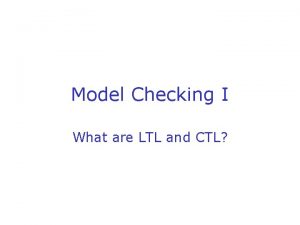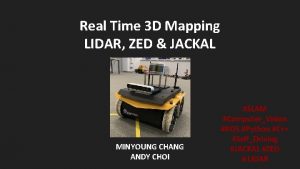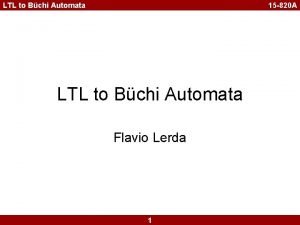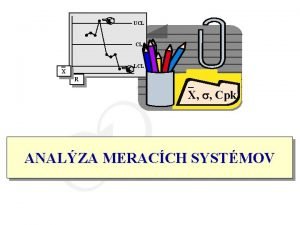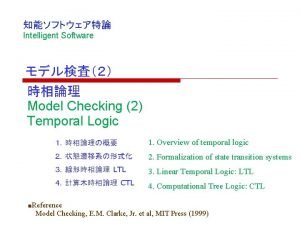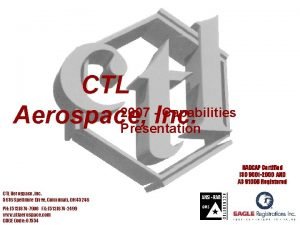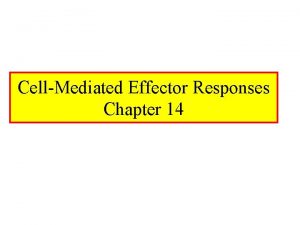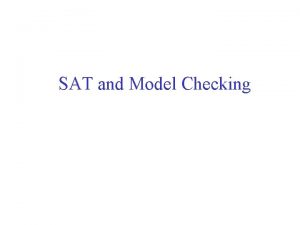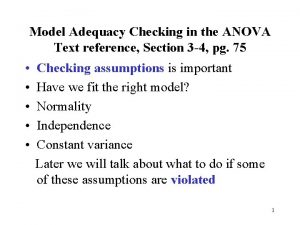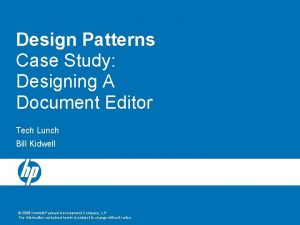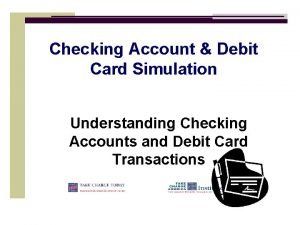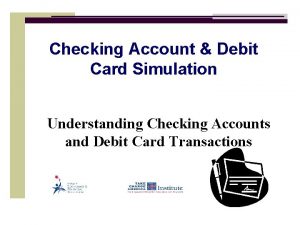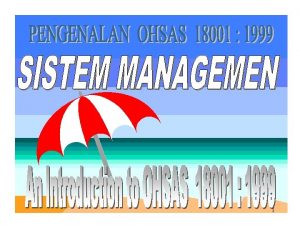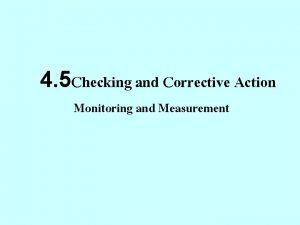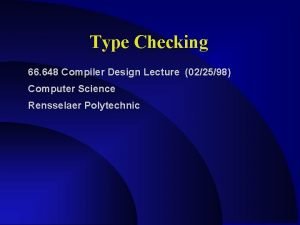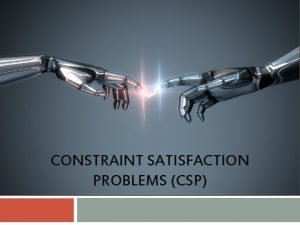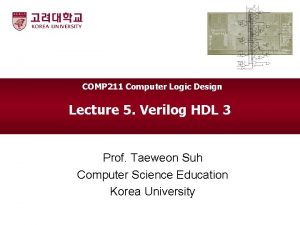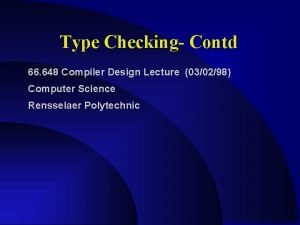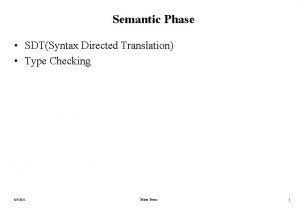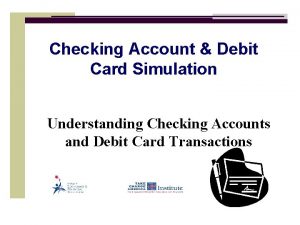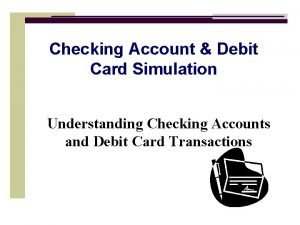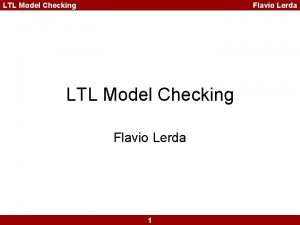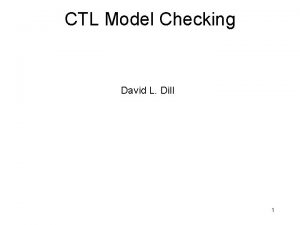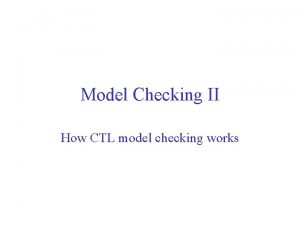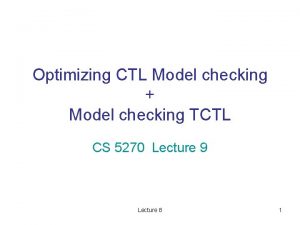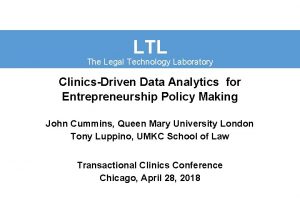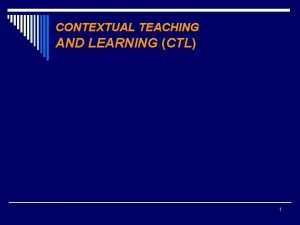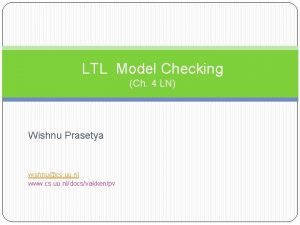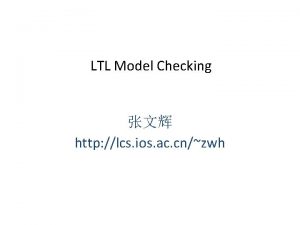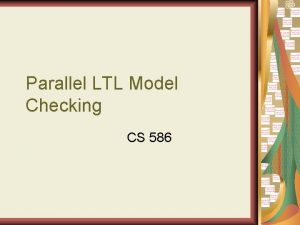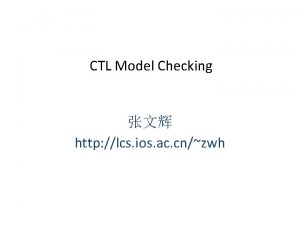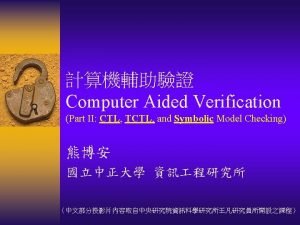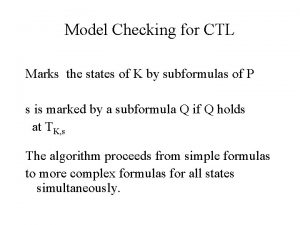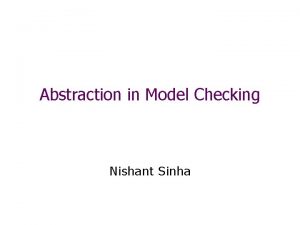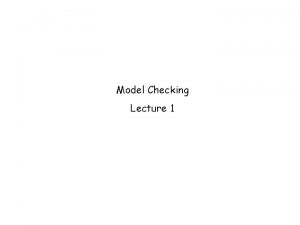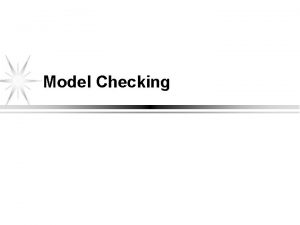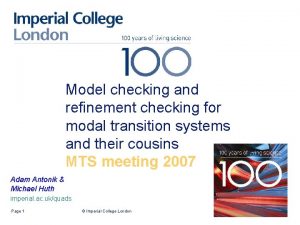Model Checking I What are LTL and CTL





















































- Slides: 53

Model Checking I What are LTL and CTL?

and or q 0 dreq q 0 bar and dack

View circuit as a transition system (dreq, q 0, dack) (dreq’, q 0’, dack’) q 0’ = dreq and dack’ = dreq & (q 0 + ( q 0 & dack))

dack and or q 0 dreq D and D

dreq q 0 dack q 0’ dack’

Idea Transition system + special temporal logic + automatic checking algorithm

Exercise (from example circuit) (dreq, q 0, dack) (dreq’, dreq & (q 0 + ( q 0 & dack))) Draw state transition diagram Q: How many states for a start?

Hint (partial answer) 000 110 111 001 101 010 011

Question 000 110 111 001 101 010 Q: how many arrows should there be out of each state? Why so? 011

Exercise 000 110 111 001 101 010 Complete the diagram Write down the corresponding binary relation as a set of pairs of states 011

Another view computation tree from a state 111

Unwinding further 111 011 111 111 011 000 100 . . . 100 010 110

Possible behaviours from state s s . . . Transition relation R Relation vs. Function?

path = possible run of the system s Transition relation R . . .

Points to note Transition system models circuit behaviour We chose the tick of the transition system to be the same as one clock cycle. Gates have zero delay – a very standard choice for synchronous circuits Could have had a finer degree of modelling of time (with delays in gates). Choices here determine what properties can be analysed Model checker starts with transition system. It doesn’t matter where it came from

Model Checking G(p -> F q) yes property MC no p q finite-state model algorithm p q counterexample (Ken Mc. Millan)

Netlist dack and or q 0 dreq D 0 and D 1

input to SMV model checker MODULE main VAR w 1 : boolean; VAR w 2 : boolean; VAR w 3 : boolean; VAR w 4 : boolean; VAR w 5 : boolean; VAR i 0 : boolean; VAR w 6 : boolean; VAR w 7 : boolean; VAR w 8 : boolean; VAR w 9 : boolean; VAR w 10 : boolean; DEFINE w 4 : = 0; DEFINE w 5 : = i 0; ASSIGN init(w 3) : = w 4; ASSIGN next(w 3) : = w 5; DEFINE w 7 : = !(w 3); DEFINE w 9 : = 1; DEFINE w 10 : = w 5 & w 6; ASSIGN init(w 8) : = w 9; ASSIGN next(w 8) : = w 10; DEFINE w 6 : = w 7 & w 8; MC builds internal representation of transition system

Transition system M S set of states (finite) R binary relation on states A set of atomic formulas L function assumed total, each state has at least one arrow out Lars backwards A set of states in which A holds finite Kripke structre

Path in M Infinite sequence of states π = s 0 s 1 s 2. . . st

Path in M s 0 s 1 s 2. . . R (s 0, s 1) є R (s 1, s 2) є R etc

Read Another look at LTL model checking Clarke, Grumberg and Hamaguchi See course page

Properties Express desired behaviour over time using special logic LTL (linear temporal logic) CTL (computation tree logic) CTL* (more expressive logic with both LTL and CTL as subsets) .

CTL* path quantifers A “for all computation paths” E “for some computation path” can prefix assertions made from Linear operators G “globally=always” F “sometimes” X “nexttime” U “until” about a path

CTL* formulas (syntax) path formulas f : : = s | f 1 f 2 | X f | f 1 U f 2 state formulas (about an individual state) s : : = a | s 1 s 2 | E f atomic formulas

Build up from core Af E f F f Gf true U f F f

Example G (req -> F ack)

Example G (req -> F ack) A request will eventually lead to an acknowledgement liveness linear

Example (Gordon) It is possible to get to a state where Started holds but Ready does not

Example (Gordon) It is possible to get to a state where Started holds but Ready does not E (F (Started & Ready))

Semantics M = (L, A, R, S) M, s f M, π g f holds at state s in M (and omit M if it is clear which M we are talking about) g holds for path π in M

Semantics Back to syntax and write down each case s a a in L(s) (atomic) s f not (s f) s f 1 f 2 s E (g) s f 1 or s Exists π. head(π) = s and π f 2 g

Semantics π f s π g π g 1 g 2 f and head(π) = s not (π g) π g 1 or π g 2

Semantics π Xg π g 1 U g 2 Exists k ≥ 0. drop k π tail(π) g 2 Forall 0 ≤ j < k. drop j π (note: I mean tail in the Haskell sense) g and g 1

CTL Branching time (remember upside-down tree) Restrict path formulas (compare with CTL*) f : : = f | s 1 s 2 | X s | s 1 U s 2 state formulas Linear time ops (X, U, F, G) must be wrapped up in a path quantifier (A, E).

Back to CTL* formulas (syntax) path formulas f : : = s | f 1 f 2 | X f | f 1 U f 2 state formulas (about an individual state) s : : = a | s 1 s 2 | E f atomic formulas

CTL Another view is that we just have the combined operators AU, AX, AF, AG and EU, EX, EF, EG and only need to think about state formulas A operators E operators for necessity for possibility

f : : = All immediate successors Some immediate succesor All paths always Some path always All paths eventually Some path eventually atomic | f | AX f | EX f | AG f | EG f | AF f | EF f | f 1 & f 2 | A (f 1 U f 2) | E (f 1 U f 2)

Examples (Gordon) It is possible to get to a state where Started holds but Ready does not

Examples (Gordon) It is possible to get to a state where Started holds but Ready does not EF (Started & Ready)

Examples (Gordon) If a request Req occurs, then it will eventually be acknowledged by Ack

Examples (Gordon) If a request Req occurs, then it will eventually be acknowledged by Ack AG (Req => AF Ack)

Examples (Gordon) If a request Req occurs, then it continues to hold, until it is eventually acknowledged

Examples (Gordon) If a request Req occurs, then it continues to hold, until it is eventually acknowledged AG (Req => A [Req U Ack])

Exercise Draw computation trees illustrating AX f and EX f

Exercise Draw computation trees illustrating AG, EG, AF and EF (See nice pictures from Pistore and Roveri)

LTL formula is of form A f where f is a path formula with subformulas that are atomic (and then, as usual, have E f = A f etc) Restrict path formulas (compare with CTL*) f : : = a | f 1 f 2 | X f | f 1 U f 2

Back to CTL* formulas (syntax) path formulas f : : = s | f 1 f 2 | X f | f 1 U f 2 state formulas (about an individual state) s : : = a | s 1 s 2 | E f atomic formulas

LTL It is the restricted path formulas that we think of as LTL specifications (See P&R again) G (critical 1 & critical 2) FG initialised. GF my. Move G (req => F ack) mutex stays initialised once Initialised my. Move will always eventually hold request acknowledge pattern

Not possible to express in LTL AG EF start Regardless of what state the program enters, there exists a computation leading back to the start state

Exercise Find something that can be expressed in LTL but not CTL

Further reading The ”Another look at LTL model checking paper” Ed Clarke’s course on Bug Catching: Automated Program Verification and Testing complete with moving bug on the home page! Covers model checking relevant to hardware too. http: //www-2. cs. cmu. edu/~emc/15 -398/

Next lecture How to model check LTL and CTL formulas
 Gg2drop
Gg2drop Insidan region jh
Insidan region jh Ltl blanket pricing
Ltl blanket pricing Zed vlp
Zed vlp Ltl to buchi automata
Ltl to buchi automata Climate controlled ltl
Climate controlled ltl Process capability ratio
Process capability ratio Utl ltl
Utl ltl Ltl 意味
Ltl 意味 Logistique mode
Logistique mode Cucm native call queuing
Cucm native call queuing Fw monitor
Fw monitor Ctl
Ctl Ctl aerospace
Ctl aerospace Ctl
Ctl Ctl
Ctl Utsc ctl
Utsc ctl ú
ú Model adequacy checking anova
Model adequacy checking anova Bounded model checking
Bounded model checking Bounded model checking
Bounded model checking In lexi document editor for undoable user operation
In lexi document editor for undoable user operation Type checking in compiler design
Type checking in compiler design Debit card simulator
Debit card simulator Checking account and debit card simulation
Checking account and debit card simulation Checking account and debit card simulation answers
Checking account and debit card simulation answers 3-1 checking accounts financial algebra
3-1 checking accounts financial algebra Checking and corrective action
Checking and corrective action Checking and corrective action
Checking and corrective action Promissory note
Promissory note Chapter 9 checking accounts and banking services
Chapter 9 checking accounts and banking services Online checking account simulation
Online checking account simulation Wow checking account
Wow checking account Type expression in compiler design
Type expression in compiler design Measuring subcooling
Measuring subcooling Ccq questions for vocabulary
Ccq questions for vocabulary What is desk check
What is desk check Arc consistency sudoku
Arc consistency sudoku Traffic light controller verilog code and testbench
Traffic light controller verilog code and testbench Checking out me history analysis
Checking out me history analysis Checking out me history context
Checking out me history context John agard checking out me history
John agard checking out me history 3-2 reconcile a bank statement worksheet answers
3-2 reconcile a bank statement worksheet answers Checking a responsive person sample
Checking a responsive person sample Pony club gear checking manual
Pony club gear checking manual Type checking in compiler design
Type checking in compiler design Sdt for type checking
Sdt for type checking Perception checking process
Perception checking process Perception checking process
Perception checking process Endorse here on check
Endorse here on check Perception checking process
Perception checking process Bandage up me eye with me own history
Bandage up me eye with me own history 3-1 savings accounts worksheet answers
3-1 savings accounts worksheet answers 3-1 savings accounts worksheet answers
3-1 savings accounts worksheet answers
